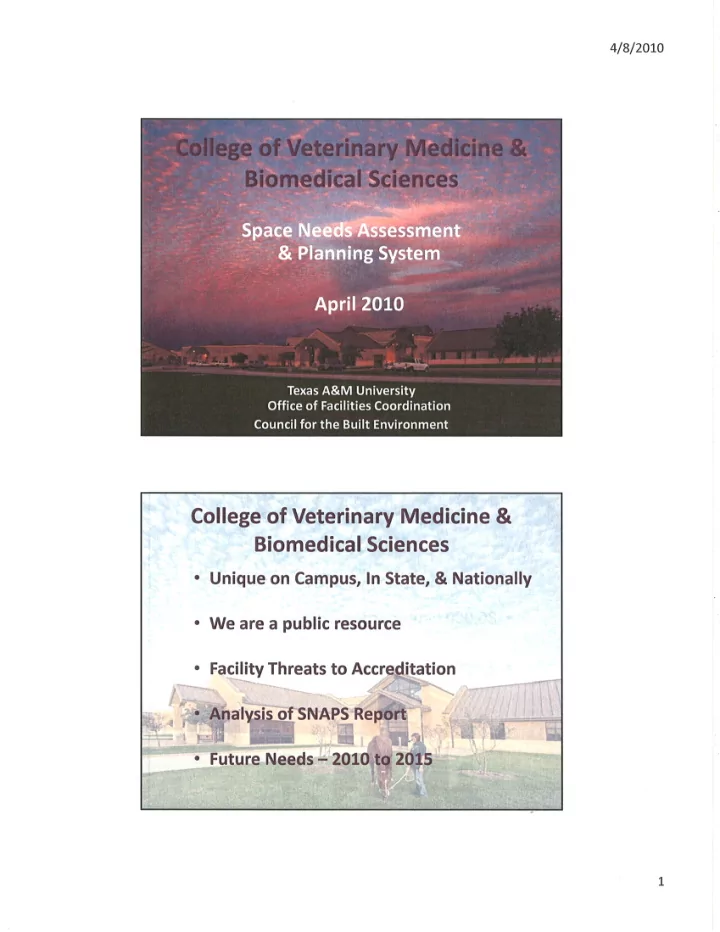

CBE Report to Provost on College SNAPS: College of Veterinary Medicine and Biomedical Sciences (CVM) April 7, 2010 1. Dean’s analysis of SNAPS: The SNAPS analysis fairly represents the existing building space assigned to the college in 2009. The computed need is primarily the Veterinary Medicine Research Building Addition (Bldg. 1197), which is due to be completed in May 2010, and the Veterinary Imaging and Cancer Treatment Center (with construction scheduled for completion in 2011). But, the 44,111 sq. ft. computed need figure does not reflect the college’s actual needs. Much of the space in veterinary medicine is categorized as “special use” because actual veterinary medical education, research, and service/outreach activities do not fit the mold of the “typical” academic setting. 2. Summary of Dean’s Space Assessment Needs: With regard to existing facilities, of the college’s six major buildings, the two “newest” major building(s) in the CVM were completed in 1993, 17 years ago. The FCNI (Facility Condition Needs Index) is .40 for both the Veterinary Medicine Research Building and the Large Animal Hospital. The construction dates and FCNI of the other four major buildings are: Veterinary Hospital, 1953 (.45); Veterinary Medical Sciences, 1955 (.50), Veterinary Medical Administration, 1968 (.44), and Small Animal Hospital, 1981 (.36). The college was cited in its last accreditation review (2009) for the upgrades needed for its facilities. Unless something is done, it is anticipated that this will become a major issue on the next accreditation site visit. With regard to construction in progress, most of the funding for the Veterinary Medicine Research Building Addition and all of the funding for the Veterinary Imaging and Cancer Treatment Center was provided from college resources alone. The Texas Higher Education Coordinating Board submitted a study to the Texas Legislature in January, 2009, titled “Projecting the Need for Veterinary Medical Education in Texas.” With the increasing needs for veterinarians in Texas, along with general increase in population of the State, 60 or more students need to be added to the current entering class size of 130. The report recommends a new basic science building at $65-80 million (for 200,000 GSF, and NSF near 100,000), plus the report cited an additional $10 million to extend the small animal hospital facilities to accommodate the larger class sizes. The University and the College also need BL3-Ag and BL3 laboratory space. 3. CBE’s concurrence or non-concurrence with dean’s analysis of SNAPS report:
Recommend
More recommend